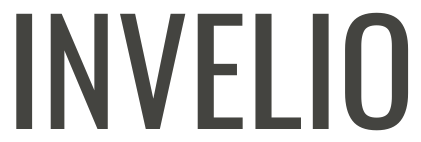Step into a budget workshop and transform how you manage your money. This isn’t just about number crunching; it’s a chance to gain essential skills for smart financial management. In these workshops, you’ll learn from experts, collaborate with peers, and create a practical budget that fits your life. Discover strategies to balance income and expenses, prepare for the future, and respond to surprises. Leave equipped with an actionable plan to improve your financial health and independence, whether you’re saving for something big or just trying to keep monthly costs in check.
Introduction to Budgeting Basics
Join us as we explore the essentials in our budget workshop, where managing money becomes both simpler and more effective.
Budget Workshop 101 Key Concepts Explained: Income, Expenses, Savings, Investments
When you start with the basics, Income is the money we receive, such as wages, bonuses, or investment returns. Expenses are the funds we spend on necessities and desires. Tracking these is crucial. Savings represent the funds set aside for future use, while Investments are those funds we allocate with the expectation of achieving a future return.
The Importance of Budgeting: Why It Matters
Understanding the importance of a budget helps us ensure that we’re not spending more than we earn, which is critical for financial security. By recognizing the significance of budgeting, we can allocate money effectively and avoid financial pitfalls.
First Steps to Take: Starting Your Budgeting Journey
To begin your budgeting journey, start by listing all sources of income and expenses. Next, prioritize savings by setting clear goals. The first steps of our budget workshop set the foundation for financial empowerment and independence.
Setting Financial Goals
Before diving into the specifics, we must understand that successful financial planning in a budget workshop starts with defined objectives. We’re looking at clearly setting our financial sights on the future and carving a path to get there.
Types of Financial Goals: Short-Term, Medium-Term, Long-Term

Short-Term Goals (Less than 1 year): These are immediate priorities or expenses, which could include saving for a vacation, an emergency fund, or minor home repairs.
- Example: Save $1,000 for a holiday trip in 8 months.
Medium-Term Goals (1 to 5 years): These often encompass larger purchases or financial commitments that need considerable saving time but are not too distant in the future.
- Example: Accumulate $20,000 for a down payment on a home by the next 3 years.
Long-Term Goals (5 years or more): These goals pave the way for significant future financial milestones, including retirement savings, children’s education, or even paying off a mortgage.
- Example: Grow a retirement fund to $500,000 in 20 years.
Goal Setting Techniques: SMART Goals for Finance
Setting S.M.A.R.T. financial goals ensures our objectives are clear and reachable. Each letter stands for:
- Specific: Goals should be well-defined.
- Not Specific: Save some money.
- Specific: Save $500 for an emergency fund.
- Measurable: We should be able to track our progress.
- Not Measurable: Save more each month.
- Measurable: Save $150 each month.
- Achievable: Goals must be realistic.
- Relevant: Goals should align with our long-term plans.
- Time-bound: We need a clear deadline.
By applying SMART financial goals, we convert vague wishes into actionable targets, fundamental to any budget workshop’s success.
Creating a Personalized Budget Plan

When we embark on a budget workshop, our core focus shifts to crafting a personalized budget plan that fits snugly into our unique financial landscape. Below, we’ll navigate through the methods that lay the groundwork for this endeavor.
Choosing a Budgeting Method: Pros and Cons
Determining the best budgeting method is our first crucial step. We could go with the envelope system, where we allocate cash into envelopes for different spending categories – straightforward but perhaps a little too rigid for variable expenses. Another option is the zero-based budget, where we assign every dollar a job, ensuring no penny goes unaccounted for; this method demands more time and attention to detail. Or, perhaps the 50/30/20 rule entices us, with its simplicity of dividing our income into needs, wants, and savings.
Tailoring Your Budget: Customization for Personal Needs
Once we’ve settled on a budgeting method, we need to adapt it to our individual needs. Let’s scrutinize our regular expenses and slice them into categories that make sense for us. Maybe we’re freelancers with a fluctuating income; then, we’ll need a buffer for lean months. Perhaps we have specific financial goals, like saving for a house, which should take precedence in our planning.
Implementation: Starting Simple and Evolving
Implementing our personalized budget doesn’t have to be overwhelming. We can start with a simple spreadsheet to track our expenses or even use apps that connect to our bank accounts for real-time monitoring. It’s okay to begin modestly and tweak our budget as we gain more insight into our spending patterns and financial flow.
As we embark on this journey together, remember that the key to a successful personalized budget plan is flexibility and regular review. By choosing the right budgeting method, tailoring it precisely, and starting simply, we pave the way to financial clarity and control.
Tools and Resources for Budgeting

In preparing for a budget workshop, we have a plethora of tools and resources at our disposal that can facilitate a smooth and efficient budgeting process.
Digital Tools: Apps and Software Recommendations
We live in an era where budgeting can be effortless with the help of digital solutions. Here’s a list of recommended apps and software:
- Mint: This app offers a snapshot of your financial health by tracking your spending, categorizing expenses, and even providing a free credit score.
- You Need A Budget (YNAB): YNAB focuses on zero-based budgeting techniques, encouraging you to give every dollar a job.
Traditional Tools: Worksheets and Envelopes
For those of us who prefer a more tactile approach, traditional tools like worksheets and the envelope system never go out of style:
- Worksheets: Check out the Free Financial Literacy Curriculum: Habitat for Humanity Workbooks which are excellent for breaking down financial goals in a workshop setting.
- Envelope System: A simple yet effective method where you allocate cash for various expenses into different envelopes, curbing the temptation to overspend.
Managing Debt and Savings Strategies

As we dive into this budget workshop, we must explore effective methods for debt repayment and develop robust savings strategies. Let’s break down these fundamental principles to secure our financial well-being.
Debt Repayment Strategies: Snowball vs. Avalanche
Snowball Method: Start by prioritizing our smallest debts first, regardless of interest rates. Once a debt is paid off, we apply that payment amount to the next smallest debt. This method creates a sense of accomplishment and can motivate us to keep going.
Avalanche Method: Contrary to the Snowball, the Avalanche approach focuses on debts with the highest interest rates. By paying these off first, we potentially save more on interest over time, although it might take longer to pay off the first debt.
Savings Tips: How to Prioritize and Build an Emergency Fund
- Set a Savings Goal: Aim to save for an emergency fund that covers 3-6 months of living expenses.
- Automate Savings: Set up automatic transfers from our checking account to our savings to ensure we consistently save.
It’s imperative to treat our savings as a non-negotiable item in our budget, just like any other essential expense.
Investing Basics: Introduction to Growing Your Savings
Before we start investing, understanding the basics is essential. Always start with a clear goal and risk assessment. Here are two key investment principles:
- Diversification: Don’t put all our eggs in one basket. Spread out our investments to mitigate risk.
- Risk Tolerance: Assess how much volatility we can stomach without panicking. Higher risk typically means the potential for higher returns over the long run but with more short-term fluctuations.
Investing isn’t just for the wealthy; it’s a tool for all of us to grow our savings over time.
Frequently Asked Questions
How can I create an effective budget?
Creating an effective budget begins with understanding our financial situation. We need to start by identifying all sources of income and then track our expenses meticulously. Planning is key, and our articles on budget rules might provide additional insight into building a solid foundation for our budget.
What are some key steps to take when setting up a budgeting worksheet?
When setting up a budgeting worksheet, we should list our income and expenses in separate categories to visualize our financial health better. The next step involves setting realistic goals and outlining a plan to reduce unnecessary expenses. Tips provided in resources like Designing a Workshop on a Budget can be particularly helpful in organizing our budget clearly and concisely.
What are important considerations when choosing a personal budgeting coach?
When choosing a personal budgeting coach, we must consider the coach’s experience, the relevance of their success stories to our situation, and the methods they use. Does the coach tailor their advice to meet our specific needs? It’s also wise to see if they provide strategies that are sustainable in the long term.
I hope you found some inspiration or useful tips in our article on ’budget workshop’! If so, I’d love to hear your thoughts and ideas in the comments below! And if you’re looking for more insightful content, don’t hesitate to explore our other articles:
- What Are Some Key Components of Successful Budgeting: Your 5 Step Starter Guide
- Beginners Guide for Budget Binder Ideas to Organize Your Finances
- Budgeting Behavior: Master Your Finances With Simple Changes
- Budget Basics: Simple Tips For Managing Your Finances
Your comments help us create better content for you. Happy reading!






